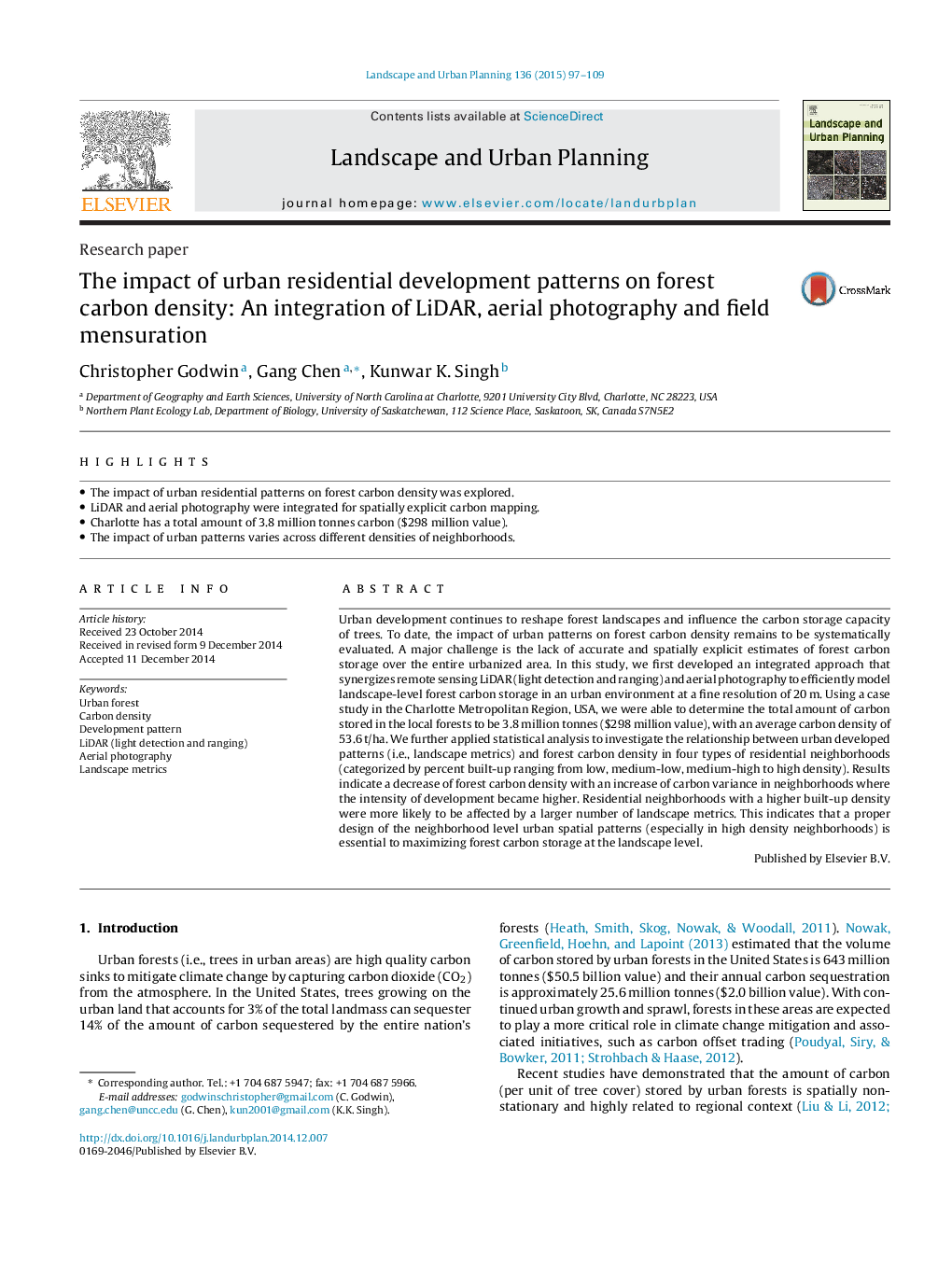| کد مقاله | کد نشریه | سال انتشار | مقاله انگلیسی | نسخه تمام متن |
|---|---|---|---|---|
| 7461221 | 1484622 | 2015 | 13 صفحه PDF | دانلود رایگان |
عنوان انگلیسی مقاله ISI
The impact of urban residential development patterns on forest carbon density: An integration of LiDAR, aerial photography and field mensuration
دانلود مقاله + سفارش ترجمه
دانلود مقاله ISI انگلیسی
رایگان برای ایرانیان
کلمات کلیدی
موضوعات مرتبط
علوم زیستی و بیوفناوری
علوم کشاورزی و بیولوژیک
بوم شناسی، تکامل، رفتار و سامانه شناسی
پیش نمایش صفحه اول مقاله

چکیده انگلیسی
Urban development continues to reshape forest landscapes and influence the carbon storage capacity of trees. To date, the impact of urban patterns on forest carbon density remains to be systematically evaluated. A major challenge is the lack of accurate and spatially explicit estimates of forest carbon storage over the entire urbanized area. In this study, we first developed an integrated approach that synergizes remote sensing LiDAR (light detection and ranging) and aerial photography to efficiently model landscape-level forest carbon storage in an urban environment at a fine resolution of 20Â m. Using a case study in the Charlotte Metropolitan Region, USA, we were able to determine the total amount of carbon stored in the local forests to be 3.8 million tonnes ($298 million value), with an average carbon density of 53.6Â t/ha. We further applied statistical analysis to investigate the relationship between urban developed patterns (i.e., landscape metrics) and forest carbon density in four types of residential neighborhoods (categorized by percent built-up ranging from low, medium-low, medium-high to high density). Results indicate a decrease of forest carbon density with an increase of carbon variance in neighborhoods where the intensity of development became higher. Residential neighborhoods with a higher built-up density were more likely to be affected by a larger number of landscape metrics. This indicates that a proper design of the neighborhood level urban spatial patterns (especially in high density neighborhoods) is essential to maximizing forest carbon storage at the landscape level.
ناشر
Database: Elsevier - ScienceDirect (ساینس دایرکت)
Journal: Landscape and Urban Planning - Volume 136, April 2015, Pages 97-109
Journal: Landscape and Urban Planning - Volume 136, April 2015, Pages 97-109
نویسندگان
Christopher Godwin, Gang Chen, Kunwar K. Singh,